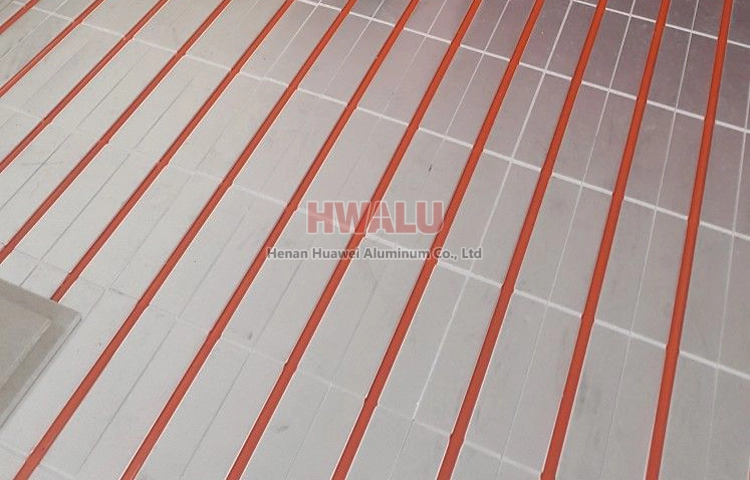PEX-Wärmeübertragungsplatte – extrudiertes oder Aluminiumblech?
We are retrofitting an existing house with radiant heat under the floor. From my research, it seems clear that we should install aluminum heat transfer plates, but I haven’t been able to determine if it’s worth investing in an extruded aluminum C-shaped heat transfer plate (omega o or U-shaped) on top of a metal plate. Even if bought in bulk, extruded sheet is about 3 times more expensive than sheet metal.
A useful study was carried out in 2013 Vergleich der Temperaturverteilung von extrudiertem Aluminium und U-förmigen Platten. Die größte Erkenntnis, die ich aus diesem Artikel mitgenommen habe, war, dass die extrudierte Platte eine ungleichmäßige Wärmeverteilung, aber eine niedrigere Rücklaufwassertemperatur hatte (gut für die Effizienz). Ich denke, die Hauptfrage ist, ob die Effizienzsteigerung ausreicht, um die Mehrkosten im Voraus zu kompensieren.

Mir ist bewusst, dass es viele Faktoren gibt, die die Energieeffizienz eines bestimmten Hauses beeinflussen können, and we will work with the local heating company to determine the setup of the system. I’m hoping someone with experience with both boards can give us a feel for how much different extruded boards are compared to aluminum boards.
If we were using sheet metal, my hunch would be to use the omega shape, considering there is more contact between the metal and the pipe. jedoch, I’ve also heard that the sheet metal makes noise when the pipe expands as it heats up, and I’m wondering if there is more room in the U-shaped channel for the pipe to expand without affecting the surrounding metal. Any thoughts on this?
For extra background, we plan on 1/2″ PEX, two lines between the joists (16C), insulated from below. Hardwood (oak) floors above, small rugs. We haven’t decided on the water heater.
PEX heat transfer plate installation video
